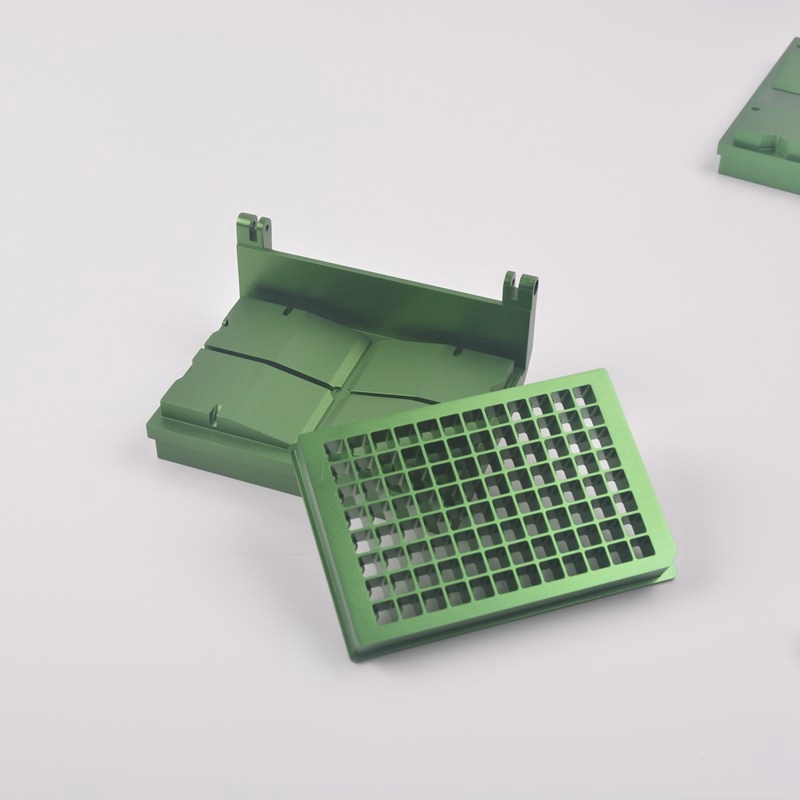Etching is a critical step performed before the anodization of aluminum or aluminum alloys, to improve the quality of the final treatment. Etching removes any surface contaminants or oxides from the component, leaving a clean and uniform surface that is better able to be anodized. This stage has significant effects on the quality and aesthetics of the part coating in real-world environmental resilience. A range of possible surface finishes can be achieved by etching, from a fine matte finish to a visible crystalline texture that results from longer and more aggressive processing.
This article will discuss what is the etching process for anodization, its importance, and the types of chemicals used.

What Is the Etching Process for Anodization?
The etching process for anodization involves a number of distinct stages. It is necessary to perform these steps correctly to avoid cross-contamination issues. The process is listed below:
For more information, see our guide on Everything You Need to Know About Aluminum Anodizing.
Why Etching Is Important Before Proceeding With Anodizing?
Etching before anodizing brings a variety of interrelated benefits that can be both technically and aesthetically important. These are listed below:
How Is Etching Done?
Etching is an alkali or acid-based chemical erosion of the part surface. This is done to expose uncontaminated, oxide-free, and finely crystalline material that is best suited to the electrochemical oxidation process of anodizing. Immersion in (commonly proprietary) chemical formulations is used to attack the surface and chemically ablate oxide and metallic material to form a keying and visually appealing surface upon which the anodizing layer can be applied.
How Long Is the Etching Process Before Getting Ready for Anodization?
Preparatory and final wash, rinse, and drying processes are fast. The etching stage, however, can take from a few minutes up to hours and even days. This depends on the nature of the etchant, its concentration, and the desired surface qualities that the part requires. The more coarse the required finish, the longer the etch process will take. Although, most parts receive a relatively short (1–3 hours) etch process to produce a fine matte surface finish that is now widely characteristic of anodized aluminum.
What Are the Types of Etching Processes?
These are the most common types of etching to precede anodizing:
What Is the Advantage of the Etching Process Before Anodizing?
Etching prior to anodizing delivers some significant advantages as listed below:
What Are the Types of Etching Chemicals Used?
Most aluminum etchant chemistries are proprietary and not published in detail. However, the generally accepted and most common chemical etching process uses the following range of dissolved materials in varied proportions, in an aqueous solution:
Are Etching Chemicals Hazardous?
No. While the etchant chemistries are not entirely without toxicity, they are not significantly harmful unless sprayed into the eyes or imbibed. They can produce skin irritation, but the material is easily washed away with water. Fumes can be mildly irritant. Basic handling precautions such as PPE, a carbon-filter breathing mask, acid/alkali-resistant plastic gloves, and a well-ventilated workspace are enough to meet required workplace safety standards. There are no long-term exposure issues, and no physiological or medical consequences are likely from regular work with these chemicals.
Is the Etching Process Applicable to Anodizing Titanium?
Yes. While etching prior to the anodization of titanium will improve both the function and cosmetics of the anodized parts, the etch solution recommended is based on ammonium persulfate (APS, (NH4)2S2O8)and sodium fluoride (NaF).
Can Etching Be a Physical Process?
Yes. Etching by grit blasting, linishing, and sanding can give good results, but the mechanical abrasion marks will remain highly visible in the finished part. At times, this is a desired finish and therefore the right process to choose. Brushed (which means linished) aluminum was a popular finish in the early consumer use of the metal, but its use has greatly diminished in recent times.
Sand/garnet grit blasting can be effective in producing coarse matte surfaces. It offers a route to quicker deep etching than chemical processes. Skill, however, is required in producing uniform results even across a single part.
Summary
This article presented etching before anodization, explained it, and discussed the process and its advantages. To learn more about etchining, contact Proto MFG representative.
Proto MFG provides a wide range of manufacturing capabilities and other value-added services for all of your prototyping and production needs. Visit our website to learn more or to request a free, no-obligation quote.